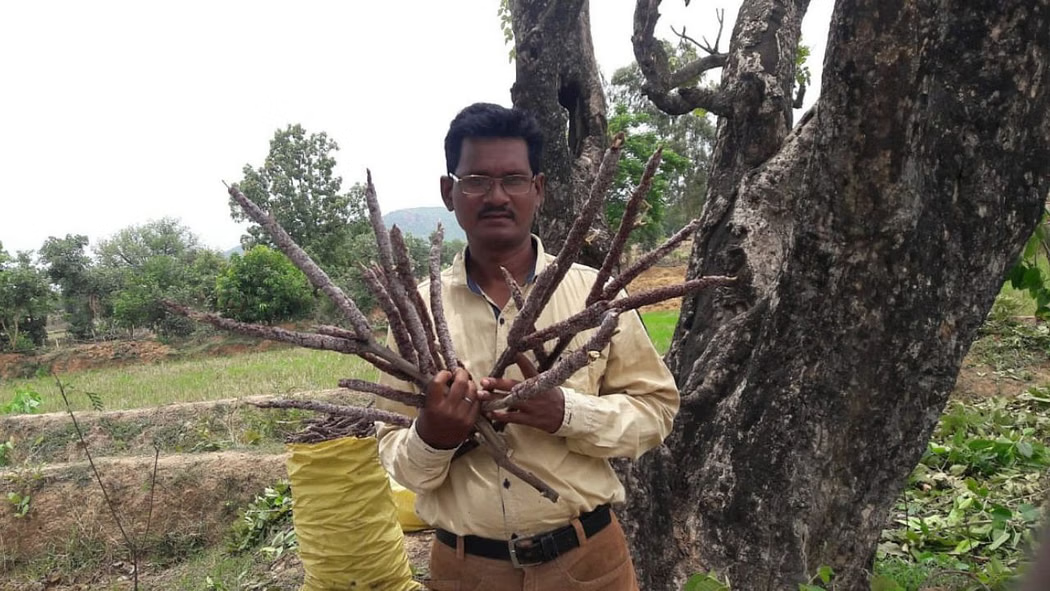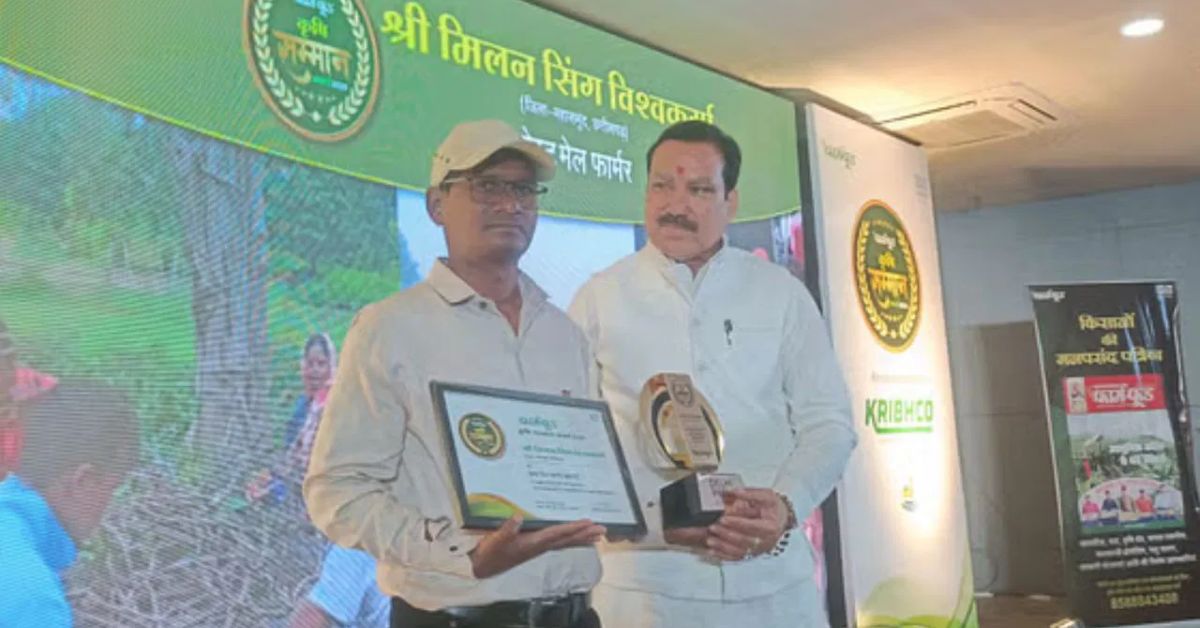This Class 12 Pass Farmer Earns Rs 8 Lakh/Year With Lac Trees in Chhattisgarh
Feature image courtesy: Krishi Jagran
On most mornings in Lalpur village, long before the sun fully filters through the sal trees, Milan Singh Vishwakarma is already out walking beneath their dappled canopy. To an outsider, these trees may seem ordinary. But to Milan, they’re life-givers.
It is here, on his modest 26-acre farm in Bilaspur, Chhattisgarh, that Milan has found prosperity not by sowing the usual grains or vegetables, but by nurturing something far less obvious: lac, a resin produced by tiny insects that thrive on these native trees.
Once unsure of how he’d sustain his family with just a Class 12 education and a patch of land, Milan now earns over Rs 6 lakh a year, not through flashy innovation or external investment, but by trusting the land and listening to nature.
His journey is a quiet revolution in a world chasing high-tech fixes for rural poverty. Sometimes, the answers grow right in your backyard.
 Today, Milan’s 26-acre plot is home to a thriving network of lac host trees. Image courtesy: Krishi Jagran
Today, Milan’s 26-acre plot is home to a thriving network of lac host trees. Image courtesy: Krishi Jagran
From forest paths to financial independence
Like many others in his region, Milan grew up watching his elders gather lac in small quantities often for home use or barter. But back then, lac farming wasn’t seen as a viable source of income. It was seasonal, unpredictable, and far from lucrative.
“I had no idea these trees could offer so much,” Milan told Krishi Jagran. “It was just something the villagers did quietly.”
That perception changed in his early 30s when local forest officers and agricultural officials began raising awareness about scientific lac cultivation – a way to systematically grow lac insects using host trees like kusum, ber, and palash.
Encouraged by their guidance, Milan began experimenting on a few trees. He used a technique called brood lac inoculation, which involves attaching mature lac resin to healthy branches so that new insects hatch and start secreting resin.
In just a few harvests, the results were hard to ignore. The same trees that once stood idle were now bringing in tens of thousands of rupees each season.
A low-cost, high-reward model
Today, Milan’s 26-acre plot is home to a thriving network of lac host trees all growing without synthetic fertilisers, chemical sprays, or even much irrigation. This low-input model suits his environment perfectly.
Lac is harvested twice a year and sold for around Rs 700 per kilogram. In a good cycle, Milan earns Rs 6 to 8 lakh annually. Compared to many other forms of farming that depend heavily on market rates, fuel, fertilisers, or middlemen, lac cultivation is refreshingly direct and consistent.
But perhaps more powerful than the numbers is the ripple effect. Milan’s success has inspired dozens of others across neighbouring villages. His plot has quietly turned into a classroom, where curious farmers drop by to understand the process from selecting host trees to timing the harvest.
Preserving the forest, sustaining a future
What sets Milan’s work apart is its harmony with the land. Instead of clearing trees to make space for more crops, his income depends on keeping the forest alive. Kusum, ber, and palash trees, often neglected or chopped down for firewood, are now cared for with intention.
Lac insects don’t harm the trees; instead, they form a symbiotic relationship, and in turn, the farmer benefits. It’s a subtle but significant shift: a livelihood that rewards conservation, not destruction.
At a time when climate concerns loom large and many rural youth are leaving farms behind, Milan’s story is a reminder that tradition and ecology don’t have to be at odds with livelihood.
 In a good cycle, Milan earns Rs 6 to 8 lakh annually. Image courtesy: Krishi Jagran
In a good cycle, Milan earns Rs 6 to 8 lakh annually. Image courtesy: Krishi Jagran
The road ahead
Milan Singh Vishwakarma doesn’t use big words like “agroforestry” or “sustainable farming.” But what he’s built in Lalpur, with patience, curiosity, and deep respect for the forest, embodies all of that and more.
With just a Class 12 education and an eye for observation, he’s carved out a life where the land pays back, season after season. For younger farmers, especially those without degrees or capital, his story is a beacon: that success in agriculture isn’t about scale or shortcuts, but about understanding what your land wants to grow.
In every brood lac he ties to a tree, Milan is doing more than farming; he’s planting hope.
News